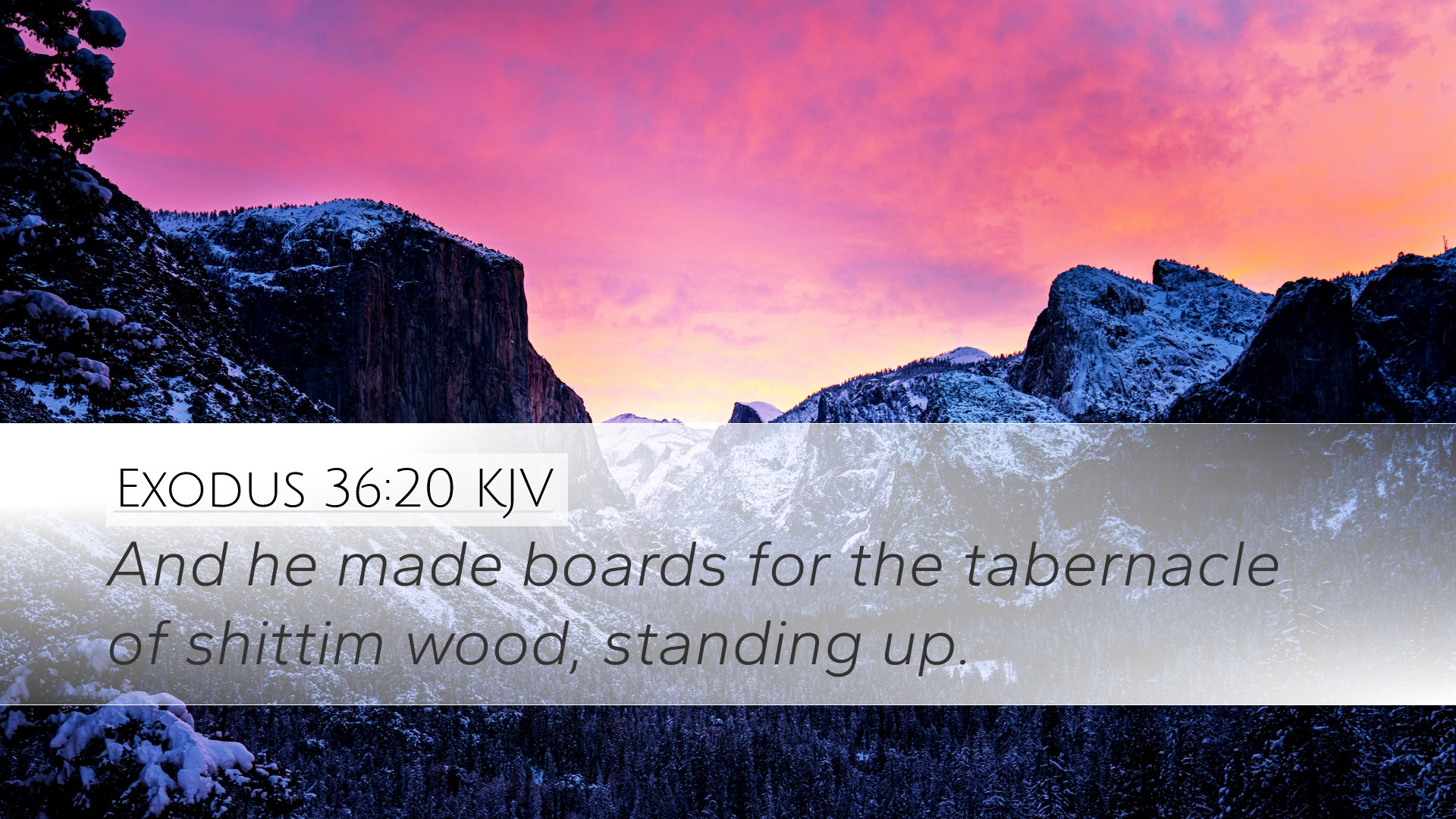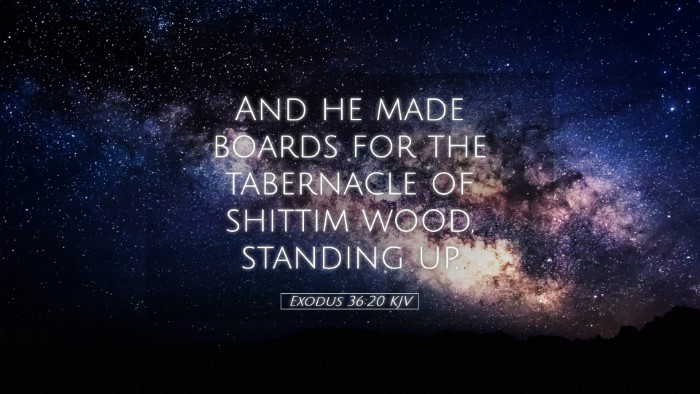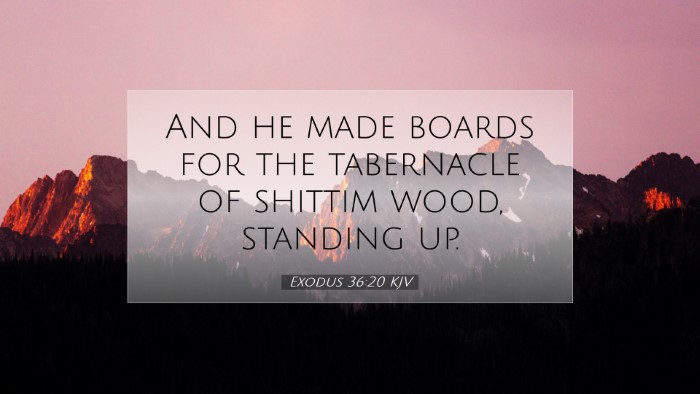Commentary on Exodus 36:20
Verse Context: Exodus 36:20 states, “And he made boards for the tabernacle of shittim wood, standing up.” This verse is part of the description of the construction of the Tabernacle, a significant structure in the wilderness journey of the Israelites, symbolizing God's dwelling among His people.
Introduction to the Tabernacle
The Tabernacle served as the central point of worship and the dwelling place of God among His people. It was structured meticulously according to divine instructions, reflecting God's order and holiness. In Exodus 36, the construction details emphasize the care and reverence involved in creating a space for divine communion.
Insights from Historic Commentaries
Matthew Henry’s Commentary
Matthew Henry observes that the boards of the Tabernacle are made of shittim wood, valued for its durability and resistance to decay. He emphasizes the significance of the materials used, implying that only the best and most lasting substances were acceptable for God’s dwelling. Henry reflects on the spiritual symbolism of the wood, which can be interpreted as representing humanity, as wood is a product of the earth, fashioned by the Creator.
Albert Barnes’ Notes
Albert Barnes elaborates on the construction aspect, noting that the boards were set upright, suggesting stability and strength. He connects this physical structure to the strength found in God, who is described in the scriptures as a refuge and stronghold for His people. The upright boards may also symbolize righteousness, as those who are upright in moral conduct often stand strong in their faith.
Adam Clarke’s Commentary
Adam Clarke highlights the meticulous attention to detail in the construction of the Tabernacle. He emphasizes that every component was designed to convey a particular spiritual truth. Clarke points out that the upright position of the boards serves as a reminder of the believers' call to stand firm in their faith, emphasizing that the church—symbolized by the Tabernacle—is to be a community upright in doctrine and practice.
Theological Significance
This verse, while simple, encapsulates profound theological themes:
- God’s Presence: The Tabernacle was designed to house the presence of God, indicating that God desires to dwell among His people.
- Holiness and Purity: The choice of shittim wood can be viewed as a metaphor for the believer’s life, which must be set apart for God's service—pure and holy.
- Structure and Order: The detailed construction underscores the importance of order in worship and community, reflecting God’s character as a God of peace and order.
Application for Today’s Believers
For pastors, theologians, and students, Exodus 36:20 prompts reflection on the nature of the church in the modern world. Just as the Tabernacle was crafted with intentionality and purpose, today’s church must also strive for intentionality in its ministry, ensuring that it serves as a fitting representation of God's kingdom.
The materials and uprightness of the boards can lead to discussions on what it means to be a community that reflects God’s character—strong, stable, and committed to His service. It challenges believers to consider how their lives can be aligned with God's design for holiness and service.
Concluding Thoughts
The construction of the Tabernacle, as seen in Exodus 36:20, serves as a rich metaphor for the active work of God among His people and the call for believers to engage in crafting communities that honor Him. As we reflect on the implications of this verse, let us be reminded that, just as the Israelites built according to God’s specifications, we are called to build lives and communities that reflect His glory.


